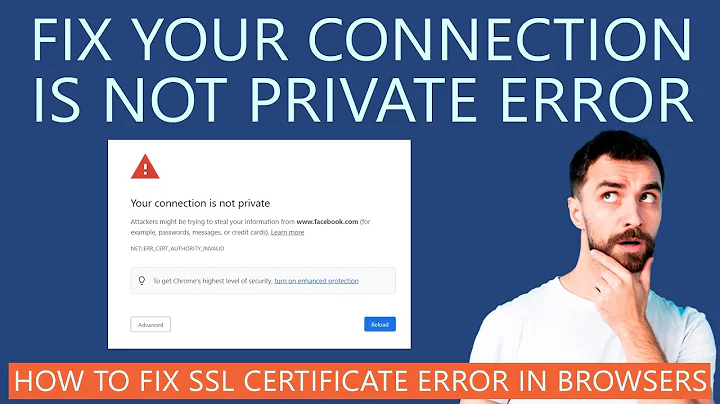Why isn't Android's Captive Portal detection triggering a browser window?
The solution I found was to set my dnsmasq to continue to resolve everything to 192.168.30.1, but to have some exceptions for captive portal test servers:
10.45.12.1 clients3.google.com
10.45.12.1 clients.l.google.com
10.45.12.1 connectivitycheck.android.com
10.45.12.1 connectivitycheck.gstatic.com
10.45.12.1 play.googleapis.com
Basically if anything tries to resolve the above domains using our dns server, they get a reply of 10.45.12.1.
10.45.12.1 is a random IP that doesn't belong to anything. It just has to not be 192.168.30.1.
The list of domains came from here.
With this in place, as soon as you connect to the RPi's WiFi, it pops up the browser page showing my site.
This is a solution, but not really an answer to the question of why this happens. If anyone can explain it, I would appreciate it.
Edit:
With this solution, if I connect and disconnect from the WiFi on the device several times, sometimes Android pops up the login page, and sometimes it doesn't. For anyone doing something similar, in the end, for a better solution, I went with this:
- Have DNSmasq resolve everything to 10.45.12.1 (or anything outside of the 192.168.30.0/24 subnet)
- It MUST be outside of the 192.168.30.0/24 subnet (or whatever your LAN subnet is) or the client will try to use ARP to figure out the MAC address of the given device, and will fail, because the device doesn't actually exist
- Have iptables forward port 80 coming from the wifi interface to localhost
This works for Android, OS X, and Windows. I don't have an iOS device to test this with. According to this, iOS devices may require some additional work.
I'm still curious why this was even necessary, and why resolving everything to 192.168.30.1 didn't work in the first place.
Related videos on Youtube
buffcat
Updated on September 18, 2022Comments
-
 buffcat over 1 year
buffcat over 1 yearI have a Raspberry Pi that is hosting a simple website using nginx. The RPi is acting as a Wireless Access Point - users can connect to its wireless network, the RPi gives them an IP (it runs a DHCP server), and they can access the site.
Because the RPi doesn't actually provide users with internet (only this one site), I have made it easier for users to find the site. Instead of knowing the exact URL for the site, I have told my dns server (dnsmasq) which the DHCP server tells clients to use, to resolve all queries to the LAN IP of my RPi (192.168.30.1).
At this point, my nginx has an entry in its config that says:
- if the host field of the user's request is not MyRPiServer.com, send a 302 redirect to MyRPiServer.com
- if the host is MyRPiServer.com, serve the local website
This works awesome.
I wanted to take it one step further. When Android connects to a wireless network, it tries to connect to http://connectivitycheck.gstatic.com/generate_204 (or one of the other similar google pages) specifically to check if the request is being redirected. If it gets a 204 code, it assumes everything is fine. If it does not, it assumes it is behind a captive portal, and pops up a browser window that opens the captive portal login.
For some reason, when I tell nginx to respond to requests for the generate_204 page with either a 302 redirect, or even a 200 (with some text), Android doesn't popup the browser.
I have a mikrotik router with a built-in hotspot feature, which does indeed have android popup the browser with the captive portal login (on the same test phone). When I look at the traffic it sends my client, it is a simple HTTP 200, with some text, just like mine.
The one thing that does seem to work is if I disable my DNS server from resolving everything to 192.168.30.1, and use iptables to redirect port 80 to localhost on my RPi.
Does anyone know why redirecting port 80 works when it comes to Android's Captive Portal detection, but configuring the DNS server to resolve everything to the RPi local IP doesn't?
Looking at the code found here https://stackoverflow.com/a/14030276/4258196, it appears that the only thing Android cares about is if it can connect to the host, and if it gets an HTTP 204 back. In my case, it's definitely connecting, and it's definitely not getting a 204 back (nginx logs show it sending HTTP 302 and HTTP 200).
My phone is running Android 8, so the code linked might be different now I supposed.
-
Rui F Ribeiro about 6 years
-
 buffcat about 6 yearsSetting my nginx to listen on port 443, and provide a self-signed SSL cert had no effect on the Android window popup - it still doesn't appear. It also doesn't make sense that Android Captive Portal detection would force you to use SSL, and then show you an SSL error because you are redirecting SSL.
buffcat about 6 yearsSetting my nginx to listen on port 443, and provide a self-signed SSL cert had no effect on the Android window popup - it still doesn't appear. It also doesn't make sense that Android Captive Portal detection would force you to use SSL, and then show you an SSL error because you are redirecting SSL. -
Rui F Ribeiro about 6 years"...when having Chrome installed" the behaviour changes. Found a lot of posts about it, and confirmed it on the field, after a workmate with android 8 was not able to open the captive portal. We have a couple of ISPes that provide roaming services for their customers (we) we captive portals, and they use valid public certificates for it.
-
Rui F Ribeiro about 6 yearsdid tcpdumps at the time, and had the Apache logs, but I think I forgot the tcpdumps in my Mac when left my job; I might have some Apache logs, not sure. I am not looking to specific data/URLs nowadays, I just redirect whatever it happens to the captive portal. I am in my home town these days, but in a week time might do some tests if need be.
-
Rui F Ribeiro about 6 yearsPretty interesting stuff. Still trying to think why.
-
Rui F Ribeiro about 6 yearsHave you tried to return a HTTP Status 204 with any address that requrests the URLs /generate_204 and /gen_204 ?
-
 buffcat about 6 yearsI haven't tried it, but that's what Android is looking for as a confirmation that everything is fine, isn't it? That's what you do if you have a captive portal setup, but don't want android to know about it (to popup anything).
buffcat about 6 yearsI haven't tried it, but that's what Android is looking for as a confirmation that everything is fine, isn't it? That's what you do if you have a captive portal setup, but don't want android to know about it (to popup anything). -
 r0berts almost 6 yearsHi I suppose when you resolved everything to one host it is remotely possible that nginx was actually giving the expected responses (204) hence no need for captive portal to pop up.
r0berts almost 6 yearsHi I suppose when you resolved everything to one host it is remotely possible that nginx was actually giving the expected responses (204) hence no need for captive portal to pop up. -
 kemotep over 5 yearsHello and welcome to the U&L stack exchange site! Please review the Help Center to get information on how to best post to this site. To get to your answer, please consider editing it to add additional context. While this link may answer the question, it is better to include the essential parts of the answer here and provide the link for reference. Link-only answers can become invalid if the linked page changes. Thank you!
kemotep over 5 yearsHello and welcome to the U&L stack exchange site! Please review the Help Center to get information on how to best post to this site. To get to your answer, please consider editing it to add additional context. While this link may answer the question, it is better to include the essential parts of the answer here and provide the link for reference. Link-only answers can become invalid if the linked page changes. Thank you!




